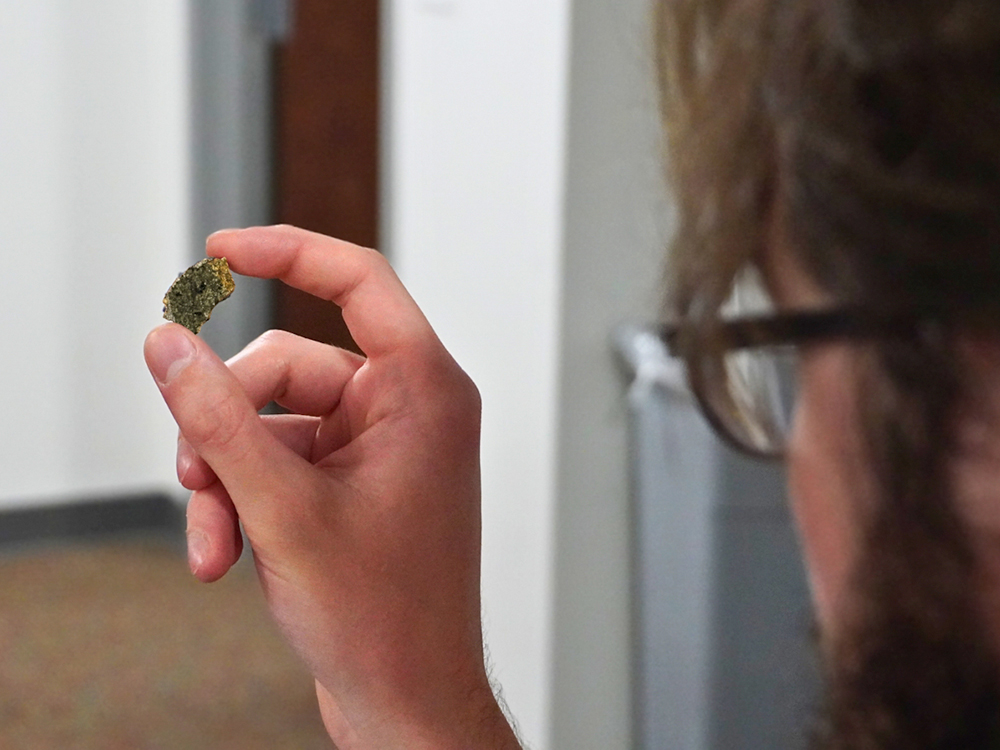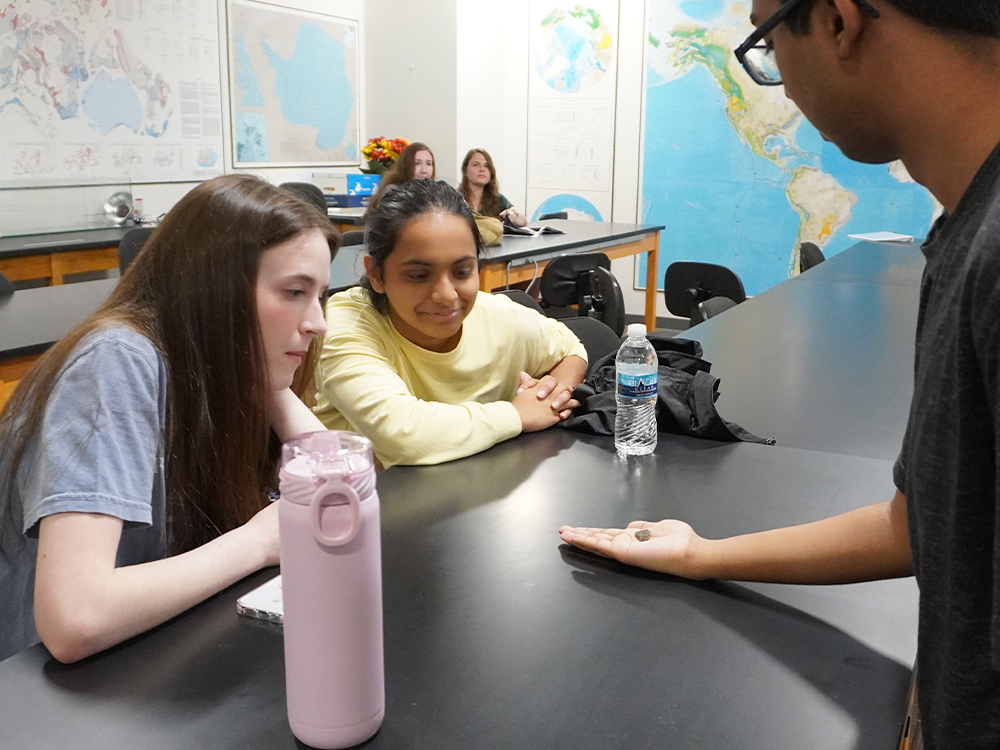The Red Planet Comes to UT Dallas
05.22.2023
 Noah Hamby, a biology senior, examines a fragment of a Martian meteorite recently donated to UT Dallas by Heritage Auctions.
Noah Hamby, a biology senior, examines a fragment of a Martian meteorite recently donated to UT Dallas by Heritage Auctions.
“I never thought I’d hold a piece of Mars.”
That quote could easily have been the tagline for a science fiction movie, but in this case, it’s from University of Texas at Dallas computer science junior Aarej Syed, who did, indeed, along with his classmates, hold a small piece of Mars during a spring class.
In his first year as a Comet, Syed, a Collegium V Honors student, took two courses related to meteorites with Dr. Robert Stern, professor of geosciences, and Randy Griffin BS’03, PhD’08, associate professor of instruction in geosciences in the School of Natural Sciences and Mathematics. Stern and Griffin, who run the UTD Meteorite Education and Research Lab in the geosciences department, maintain a collection of donated meteorites on campus. In March, they received a small fragment of a Martian meteorite from Craig Kissick, vice president for nature and science at Heritage Auctions, which regularly sells meteorites.
A Martian meteorite is a piece of Mars that breaks off the planet due to an impact event, travels through space, then lands on Earth as a meteorite. Fewer than 300 have been found.
The fragment donated by the Dallas auction house came off a larger mass and is about the size of a nickel. The parent meteorite was found in 2019 in northwest Africa and is part of the shergottite family.
“Our natural history category has presented world-class meteorites for years and typically has a significant grouping of different varieties in most of our auctions,” Kissick said. “While certain meteorites can definitely represent a lot of value, I do think the ‘cool factor’ of owning something extraterrestrial is the real appeal. I thought donating a fragment of such a unique and inherently rare meteorite would be a small help to further UTD’s efforts in educating students about meteorites.”
Kissick has visited campus several times to show meteorites and speak with students. During the spring class session where Kissick presented the Martian meteorite fragment to UTD, Syed was eager to hold it.
“I’m fascinated by this meteorite fragment because of the story it tells. Many things have to go right for material from a whole different planet to end up here,” he said. “I think it’s great that this fragment was donated to UTD’s meteorite collection because learning about meteorites becomes much more engaging and interactive when students can hold and handle samples.”
 During a UT Dallas honors course focused on meteorites, computer science junior Aarej Syed held a fragment of a Martian meteorite and described it to classmates Emily Mills (left), a biomedical engineering junior, and Harini Arunprakash, a computer engineering junior.
During a UT Dallas honors course focused on meteorites, computer science junior Aarej Syed held a fragment of a Martian meteorite and described it to classmates Emily Mills (left), a biomedical engineering junior, and Harini Arunprakash, a computer engineering junior.
Stern said that while meteorites might not be as aesthetically beautiful as other gems and minerals, meteorites are in many ways more interesting because they are so old and come from outer space.
“Students just go crazy over our meteorites, and the community is intrigued by them as well,” said Stern, who invites the public to bring an item in for evaluation if they think it might be a meteorite. “While Martian meteorites can be viewed in glass cases in museums or can be studied in specialized research labs, students rarely get their hands on them.”
Syed, a self-professed astronomy buff, appreciated the opportunity.
“Until I enrolled in UTD’s meteorite classes, I never thought I’d hold a piece of Mars. In fact, I didn’t think I’d get to hold any meteorites whatsoever,” he said. “I now have access to all kinds of meteorite samples thanks to these classes. Joining them has been an amazing opportunity, and I’m grateful to my professors and to our meteorite donors for making this possible.”
–Amanda Siegfried
Tags: Dr. Randy Griffin, Dr. Robert Stern, NSM